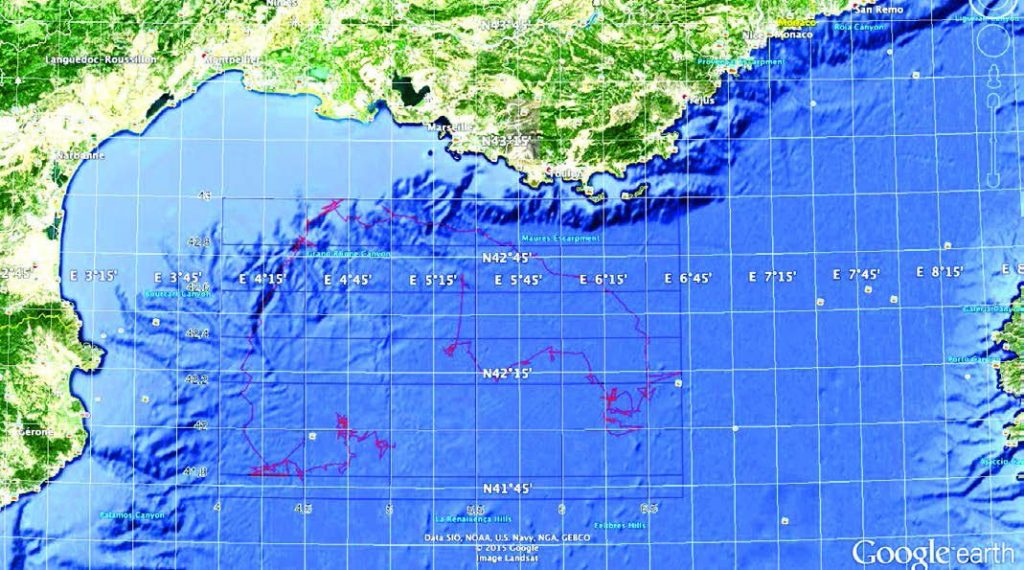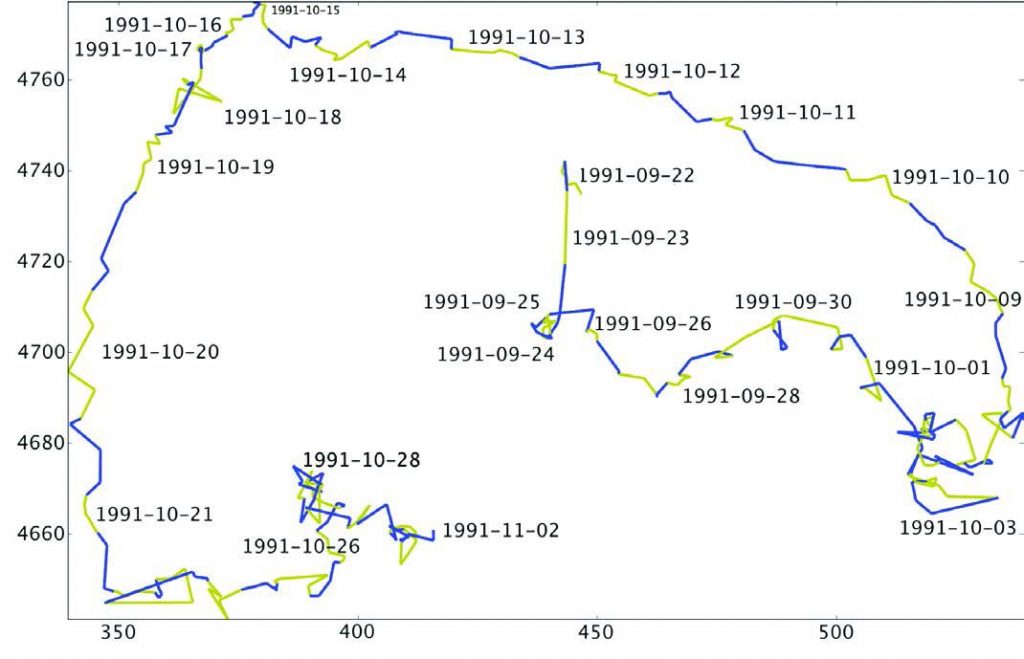← Back
A whale’s slumber detected in Argos data
![a whale and the boat used to equip it, taken during a campaign in 1990 (C. Moriaz) (from [Viale et al., 2019]) a whale and the boat used to equip it, taken during a campaign in 1990 (C. Moriaz) (from [Viale et al., 2019])](https://www.argos-system.org/wp-content/uploads/2022/02/whale-1.jpg)
Animal tracking with Argos began in the 1980s. Improved techniques and satellite coverage now allow for much more tracking, with better resolutions.
However, old tracks analysed with current methods can help understand issues such as the sleep of whales as is the case of fin whales, here in the Mediterranean Sea.
Tracking a fin whale in the 1980s and 1990s
The use of the Argos system on animals, in particular on marine animals, enabled questions that had remained a mystery to be answered.
One of these questions concerned the migration (or not) of the fin whale (Balaenoptera physalus) in the Mediterranean Sea. An Argos PTT weighing 1.8 kg was designed to answer this question. In 1991, a campaign made it possible to equip a fin whale off Corsica.
Unfortunately, this monitoring only lasted 42 days instead of the expected 3 months. This left the initial question unanswered. However, some of the characteristics of the track intrigued the researchers.
More info about animal tracking with Argos

The whale track on the Gulf of Lion map (from [Viale et al., 2019])
The whale’s slumber
The whale’s track shows “loops” at night. These loops are like those observed on a drifting buoy driven only by the Coriolis force (a movement also called “inertial oscillation”). For examples in the area, see Buoys and turtles exploring the Western Mediterranean Sea ways).
The hypothesis was that the whale was in a sleeping phase but, unfortunately, the two satellites making up the Argos system back in the 90s didn’t provide a very detailed track. Five loops were noted in the travel (over 42 days).
By reusing the data with more modern and sophisticated methods of analysis, however, the authors were able to identify more phases where the whale did not seem to have any movement of its own (computing the whale’s speed between points).
Moreover, taking into account variations in the length of day and night (reaching one hour between the beginning and the end of the monitoring), the fin whale had been sleeping exclusively starting 1 or 2 hours after sunset for 6 to 7 hours.
Due to the presence on certain parts of the trajectory of significant currents (Liguro-Provençal-Catalan current, see again Buoys and turtles exploring the Western Mediterranean Sea ways), which drive movements of objects drifting on the surface, inertia oscillations are not present throughout.
They are nevertheless finally noticed on 26 nights (out of 41). During 15 other nights, a rest phase was also detected, at the same times with respect to nightfall and sunrise.

Day-night alternance along the whale’s journey: the segment between consecutive location points is blue if it starts at night, green if it starts during the day. Scales in km, vertically from the equator; horizontally from the Greenwich meridian. Up to 26 loops can be distinguished corresponding to phases when the animal is not active, for 26 consecutive nights (from [Viale et al., 2019])
A diet phased with the night
The fin whale feeds mainly on euphausiids (a species of micronekton similar to the krill of the Southern Ocean) which undertake a daily vertical migration, rising to the surface in groups at nightfall and leaving at depth at sunrise.
Its sleeping phases are timed to coincide with the periods when its preys are dispersed, even if they keep at the surface all night. At nightfall and sunrise (more precisely 2 hours before), it is awake to attack its prey when they are most grouped. During the day, it would have to dive deeply to catch them.
As technology advances, even ancient tracks can be analysed with modern methods and add to the knowledge of marine animals that we have acquired, partly thanks to Argos.
References
- Denise Viale, Laurent Koechlin et Carli Viale, 2021 : Mise en évidence du sommeil d’une baleine dans les courants marins de Méditerranée nord-occidentale, Bulletin de la Société Zoologique de France, volume 146 (1), pages 39 à 51 ISSN : 0037-962X
- Denise Viale, Laurent Koechlin, Carli Viale, 2019: Sleep cycle of a fin whale based on reprocessing of old satellite observations, doi: https://doi.org/10.1101/655886
Main photo: a whale and the boat used to equip it, taken during a campaign in 1990 (C. Moriaz) (from [Viale et al., 2019])
